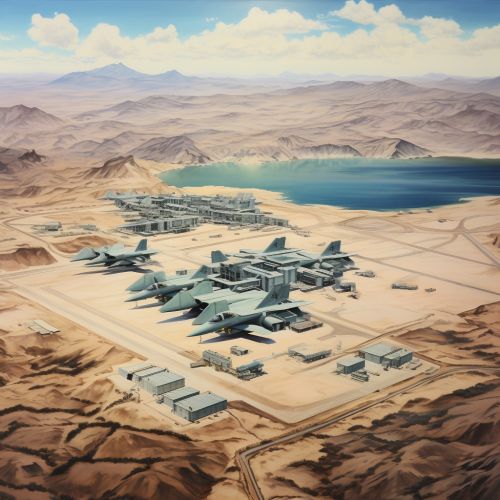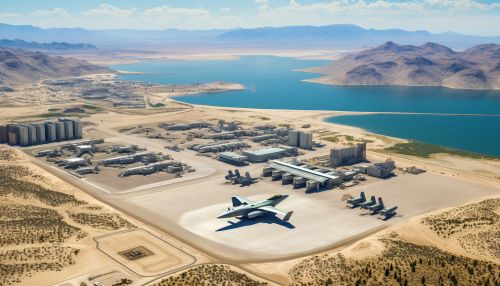Naval Air Weapons Station China Lake
Overview
Naval Air Weapons Station (NAWS) China Lake is a large military installation in the Western Mojave Desert region of California, approximately 150 miles north of Los Angeles. The base is part of the Navy Region Southwest under Commander, Navy Installations Command and is the Navy's largest single landholding, representing 85% of the Navy's land for weapons and armaments research, development, acquisition, testing and evaluation (RDAT&E), and 38% of the Navy's land holdings worldwide. In total, its two ranges and main site cover more than 1.1 million acres, an area larger than the state of Rhode Island.


History
NAWS China Lake was established during World War II as the Naval Ordnance Test Station (NOTS) in response to the need for a secure and expansive testing environment for naval weapons. The location was chosen due to its remoteness, suitable weather for year-round testing, and proximity to the Pacific Fleet. The station was officially commissioned on November 8, 1943. The establishment of NOTS represented a pioneering effort in the consolidation of diverse research and testing activities into a single organization.
Facilities and Operations
The station is home to more than 6200 military, civilian, and contract personnel who work in a broad range of specialties. NAWS China Lake supports the Navy's mission by providing advanced training environments and conducting research, development, testing, and evaluation of weapon systems. The station is also responsible for operational readiness and safety of the Navy's tactical aircraft fleet.
The base has several unique features, including the City of Ridgecrest, which is located within its boundaries and serves as a community for the personnel and their families. The base also includes two geographically separate areas, the North and South Ranges, which are used for different types of testing and training.
The facilities at NAWS China Lake include laboratories, test ranges, maintenance facilities, and administrative offices. The base also has its own utilities, including water, power, and communication systems. The station is also home to the Armitage Field, which is the main airfield for the base.
Research and Development
NAWS China Lake is a hub for the Navy's research and development activities. The base is home to the Naval Air Warfare Center Weapons Division (NAWCWD), which conducts research, development, test and evaluation, and in-service support for air, ground, and sea-based weapons systems. The NAWCWD is responsible for the development of many of the Navy's most advanced weapons systems, including the Sidewinder missile, the Tomahawk cruise missile, and the JDAM.
The base also hosts the VX-9, which is responsible for operational test and evaluation of new aircraft and weapons systems for the Navy and Marine Corps. The squadron's mission is to provide the fleet with tested and proven aircraft and weapons systems that increase the combat effectiveness of naval aviation forces.
Environmental Stewardship
NAWS China Lake is located in a unique and sensitive desert ecosystem. The base is committed to environmental stewardship and has implemented numerous programs to protect and conserve the natural resources within its boundaries. These include efforts to conserve water, reduce energy use, and protect endangered species and their habitats. The base also works closely with local, state, and federal agencies to ensure compliance with environmental regulations and to promote sustainable practices.
See Also
Naval Air Warfare Center Weapons Division Air Test and Evaluation Squadron Nine Ridgecrest, California
